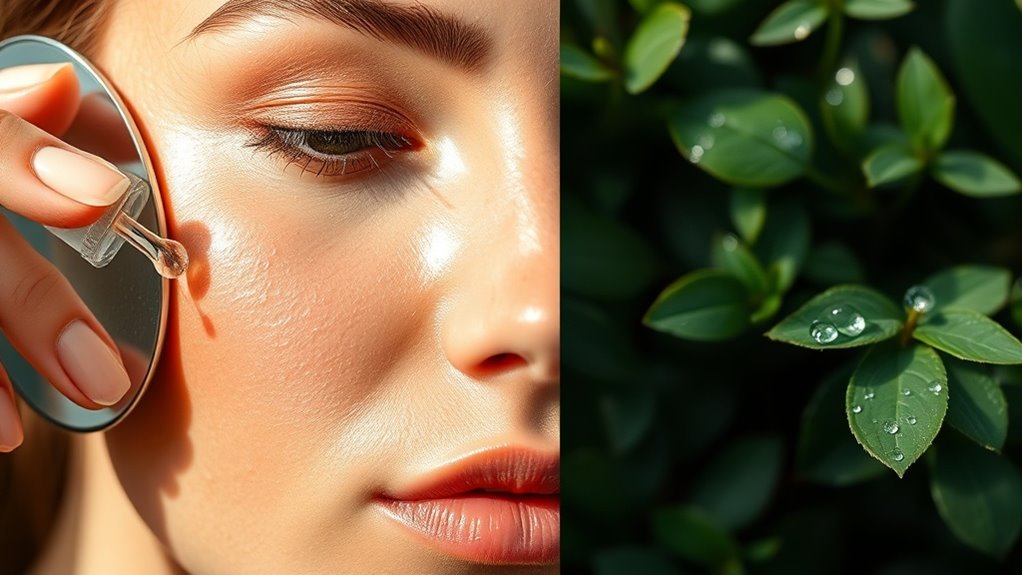How to Identify Your Skin Type Without a Professional
Have you ever wondered why your skin reacts differently to various products? Identifying your skin type is essential for effective skincare, but you don’t need a professional to figure it out. By conducting a simple, methodical test yourself, you can gain valuable insights into your skin’s needs. Understanding your unique skin type can lead to healthier choices and better results. Let’s explore the steps to accurately assess your skin type without expert help.
Understanding Different Skin Types
When it comes to skincare, understanding different skin types is essential for effective treatment and product selection. Your skin type can generally be classified as normal, oily, dry, combination, or sensitive.
Using a thorough skin type guide helps you identify your specific needs. By recognizing these characteristics, you can choose products tailored to your skin, enhancing your overall skincare routine effectively. Knowing your skin type can also help you manage issues such as excess shine or dryness more effectively.
Preparing for Skin Type Assessment
Before evaluating your skin type, it’s important to prepare properly for the assessment.
Start by cleansing your face with a gentle cleanser to remove makeup and impurities.
Avoid applying any products like moisturizers or treatments beforehand.
Allow your skin to rest for at least an hour in its natural state.
This guarantees accurate results when determining your skin type. Proper identification of skin type allows for personalized skincare routines.
The Bare-Faced Test
The Bare-Faced Test reveals your true skin type by observing how your skin behaves in its natural state, free from products or treatments. To conduct this test, follow the steps below:
| Time (Hours) | Observation | Skin Reaction |
|---|---|---|
| 1 | Initial feel | Moisture levels |
| 3 | Increase oiliness | Oily or dry areas |
| 6 | Midday assessment | Redness or sensitivity |
| 12 | End of day | Overall balance |
By understanding different skin types, you can better analyze your observations to accurately identify your skin’s needs.
Observing Oil Production
After gathering initial data through the Bare-Faced Test, observing oil production provides further insight into your skin type.
Monitor your skin’s oiliness throughout the day, particularly in the T-zone, which includes your forehead, nose, and chin. Overactive oil production often indicates oily skin, while minimal oil suggests dry skin.
Normal skin shows balanced oil levels, with moderate production overall. Tracking oil levels over a week helps avoid skewed results caused by certain products and varying environmental conditions.
Analyzing Skin Sensitivity
Skin sensitivity plays an essential role in identifying your skin type, as it influences how your skin reacts to various products and environmental factors.
You can assess sensitivity by observing reactions to new products, like redness or itching. Note if your skin easily reacts to harsh weather or specific ingredients. Additionally, consider whether your skin often feels irritated after using harsh cleansers that may disrupt its protective barrier.
Recognizing these patterns helps you choose suitable skincare options tailored to your unique skin sensitivity.
Checking Moisture Levels
Evaluating moisture levels is an essential step in determining your skin type, as hydration directly influences the overall health and appearance of your skin.
To check your moisture levels, try these methods:
-
The Tissue Test: Press a tissue against your skin to see how much oil it absorbs.
-
The Hydration Test: After cleansing, observe how your skin feels over the next hour.
-
The Feel Test: Pay attention to dryness or tightness throughout the day.
Owning Your Skin Type
Once you understand your skin type, you can make informed choices that enhance its health and appearance.
Embrace your unique characteristics by selecting the right products tailored to your specific needs. For instance, use nourishing moisturizers for dry skin or lightweight gels for oily skin.
Adjust your routine according to seasonal changes, and consistently monitor your skin’s response to maintain ideal balance.

